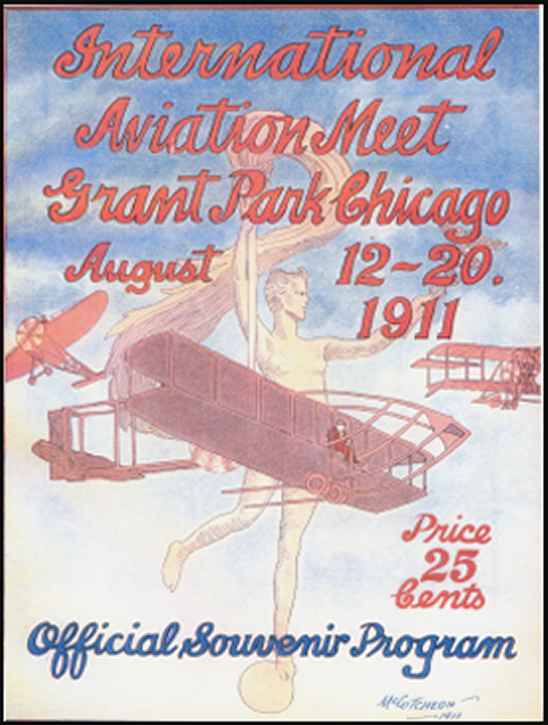
|
CHARLIE FAILS FLYING TESTS In the meantime the Macomber engine was returned and Walsh proceeded to make acceptance flights before John Kiley, who represented the Harkness in Los Angeles. It was accepted and shipped to North Island in the latter part of April 1911. For goodwill and publicity purposes, Harkness turned the plane over to Kiley, little more has been uncovered regarding this plane except that Harkness seemed pleased with it and the Macomber engine. It was flown quite often from the San Diego Aero Club Camp. In later 1912, the Walsh's were in New York and they visited the Mineola Flying Field on Long Island, Alice, always nosing around, spotted a tent with a sign on it "No Trespassing." She couldn't resist peeking inside; her eyes bulged as she screamed for Charlie to have a look. No mistake, it was the Harkness Silver Dart. They could not find out any more about it, however, and never heard of it, or saw it again. |
|
Henry Manning had already lined up a full summer and fall schedule of flight exhibitions throughout the Northwest. Harry Christofferson, youngest of the Christofferson brothers, who would later make a name for themselves in aviation, was already working for Manning and became Charlie's mechanic. They made a great pair. Harry could repair anything and was able to keep the Silver Dart airworthy despite adverse conditions, constant dismantling, erection, and numerous accidents. Planes weren't flown from one engagement to another in those days. A flight around the pasture, race track, or fair grounds was asking plenty from both pilot and machine. |
 |
|
JUNE 3, 1911 BY T. GAGNON Library of Congress Collection |
|
|
 |
|
Collection of Ernie Sansome |
| Throughout July and August, the schedule remained heavy. Flights were made a Vancouver, B.C., Wenatchee, Washington where he ran into an apple tree. Albany, and LaGarange, Oregon where the wind blew the plane backwards down the road. Twin Falls and Moscow, Idaho and on to Cheyenne, and Laramie, Wyoming. Upon reaching the higher elevations of Laramie, Wyoming is 7,200 feet above sea level, Walsh installed extra wing panels, increasing lift and thus enabling takeoff in the thinner air. For most of these cities ti was the first airplane to ever fly in the area. During one of his flights at Seattle, Walsh flew out over Lake Washington and upon landing told officials that one day soon they would have to go down into the lake and trim the trees if they wanted to keep the waters navigable. There were several wrecks of old sailing vessels. The people couldn't believe it, but from the air these conditions wre readily evident. Some 10 or 12 years later, the Seattle newspaper carried accounts of how the State lowered the water level of Lake Washington some 12 feet by dredging a canal to Puget Sound Bay and then topped the overgrowth of trees and debris. The next dates were at Fremont, then Kearney, Nebraska, by Aug 11 & 12, Walsh had made ten exhibition engagements, covered four states and one at British Columbia in two months time and there were always large crowds in attendance. It seemed to Charlie's wife, Alice, that they weren't getting a fair share of the gate receipts though. She asked Manning if she could take the tickets at the Kearney Show since she wasn't doing anything anyway. Hank Manning's son Jack always had his job. He wasn't too enthused over the idea but Jack welcomed the time off. Alice got the job and sure enough, by the end of the day she figured they were only getting about 20% instead of the promised 40% of the gate receipts. Alice was furious and wanted to have it out with the Mannings then and there, but neither of them could be found. Charlie calmed her down and promised they would discuss the matter with the managers the next day. The Walsh's arrived at the fair grounds early in the morning to find everything torn down and gone. Like a gypsy carnival, the tents were gone, the refreshment stands, even the Walsh airplane, and particularly amiss was any trace of the Mannings. For days they tried to find the men or the airplane. No one knew what happened. The townspeople were sorry and apologetic but the promoters had skipped clean and free. |
AVIATION MEET ARRANGED FOR TWIN FALLS July 15 and 16 |
 |
|
Grant Park, Chicago (For complete story, click on title) Courtesy of Gary Williams, Air-Racing Writer America's Flyways Magazine 2-24-06 |
| Charlie was at a loss. Angry and dejected he picked up the family, the few extra dollars they had saved and went to Chicago where an "Aeroplane Meet" was to be held at Grant Park. Charlie wanted to see what the Eastern flyers wre doing and perhaps meet a few. He did, and in a whirlwind of excitement, signed with the Curtiss Exhibition Company, as one of their regular aviators. |
 |
|
to Charles F. Walsh on Aug. 8, 1911, by the Aero Club of California. (Original in the Smithsonian Institute, Washington, D.C.) Collection of Ernie Sansome |
|
|